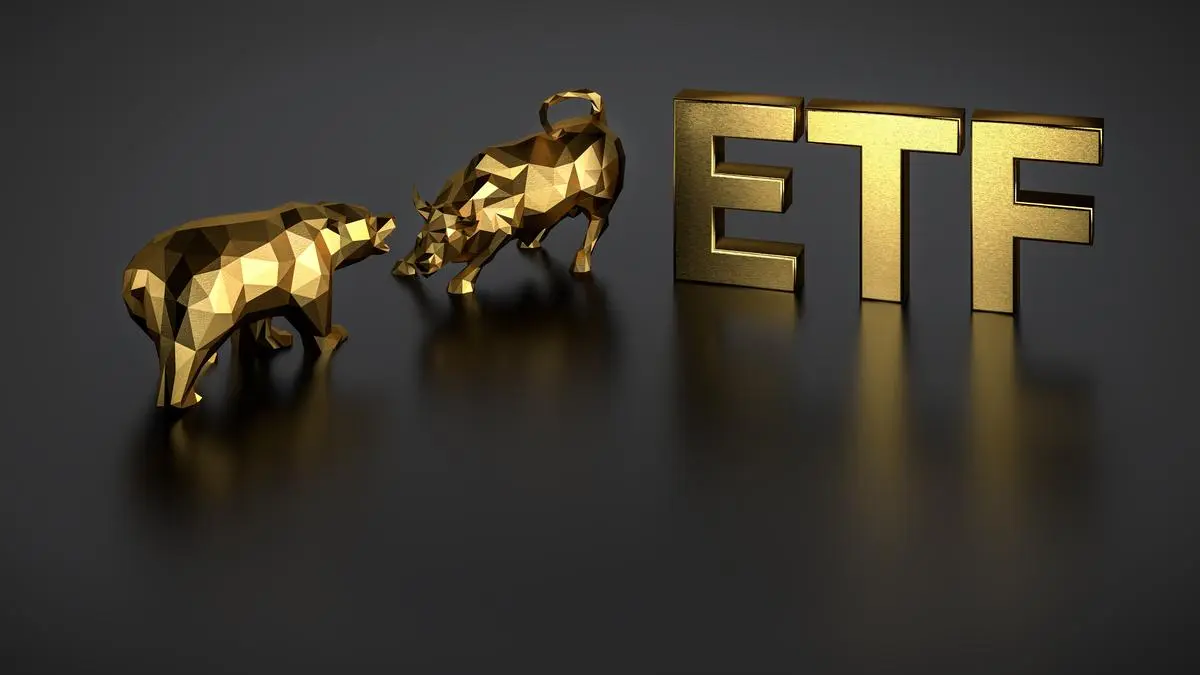As Dhanteras approaches, Indian investors are turning to gold again — not just for tradition, but as a hedge against economic uncertainty. Amidst challenges, exchange-traded funds (ETFs) are the perfect vehicle for investors.
Sky-high physical prices and storage concerns are driving investors toward paper forms of bullion. Gold ETFs saw record inflows of ₹8,151 crore in September, while silver ETF folios tripled, after rising 180 per cent in August in India.
“Given purity and storage concerns, investors prefer ETFs and mutual funds for bullion exposure,” said Nitin Rao, CEO, InCred Wealth. Funds like Kotak Gold Silver Passive FoF, Mirae Asset Gold Silver Passive FoF, Edelweiss Gold and Silver ETF FoF, and Motilal Oswal Gold and Silver ETFs FoF have become popular options for investors seeking diversified exposure without physical handling.
However, fund houses, including Kotak, Tata, UTI and SBI have suspended lump sum investments due to an ongoing shortage of physical silver in the domestic market and a sharp premium in local prices compared to global benchmarks.
Tejas Shigrekar of Angel One notes that lower customs duty and a simplified capital gains regime have boosted ETF and digital gold investments. Jateen Trivedi, Vice-President, Research Comm of LKP Securities, too, recommends ETFs, Sovereign Gold Bonds (SGBs) and digital gold over physical buying, citing their liquidity and safety advantages.
While precious metals have sparkled through the year, wealth managers warn that the glitter may mask risks of overvaluation. The advice: stay disciplined, diversify, and avoid emotional buying.
Gold, silver trump equities
In 2025, both metals have handily outperformed equities, buoyed by de-dollarisation trends, geopolitical tensions and inflation fears.
According to Hareesh V, Head of Commodity Research, Geojit Investments, silver has been the top performer, surging from ₹95,180 per kg last October to ₹1,64,000 by mid-October 2025 — a remarkable 72 per cent gain. Gold rose 59 per cent, climbing from ₹77,159 per 10 gm to ₹1,23,370 in the same period. By contrast, the Nifty 50 eked out a 1.7 per cent gain, inching from 24,854 to 25,200. Trivedi echoes this, saying that “Silver’s dual role — both precious and industrial — has drawn investors seeking safety and growth.”
On a five-year Diwali-to-Diwali basis, gold and silver have compounded at 19.9 per cent and 21 per cent CAGR, respectively, compared with the Nifty’s 14.6 per cent, Hareesh said. Trivedi’s long-term data show an even stronger outperformance, with gold and silver up 153 per cent and 165 per cent, respectively, since 2020, outpacing the Nifty’s 119 per cent rise.
Silver – the volatile star
Industrial factors appear to dominate silver’s surge this year. “The rally is underpinned by a structural supply deficit and record-high industrial use of 680.5 million ounces in 2024,” said InCred’s Rao.
The solar sector alone is expected to consume over 160 million ounces this year, driven by global clean energy initiatives. Meanwhile, investment demand has surged due to economic uncertainty, inflation hedging, and expectations of interest rate cuts, with global commodity ETFs adding nearly 95 million ounces in H1 2025. While investor sentiment can fluctuate, industrial demand is more structural and long-term, said Sumit Bhatnagar, Fund Manager – Equity at LIC Mutual Fund AMC.
Hareesh adds, “Silver’s role in solar panels, EVs, and semiconductors has made it a key beneficiary of the green energy transition.” Trivedi estimates that roughly 70 per cent of silver’s rally is investment-led, with 30 per cent coming from industrial demand — a dual push that enhances its long-term appeal.
Yet, its volatility remains high: annual price swings exceed 20 per cent, compared with gold’s 14 per cent and the Nifty’s 12 per cent. Analysts caution that while silver offers tactical upside, it also demands patience and a higher risk appetite.
Global drivers and Diwali outlook
Gold continues to shine as a resilient asset amid global crosscurrents. “Escalating geopolitical tensions, tariff disputes — especially with China — and ambiguity around the US Fed’s policy are driving safe-haven demand,” said Hareesh. Central bank gold buying remains robust, reinforcing its reserve status.
Both Hareesh and Trivedi expect the bullish trend to persist through mid-2026, supported by dovish global monetary policy, dollar weakness, and sustained central bank accumulation. Their Diwali price targets hover around ₹1,22,000-1,27,000 per 10 g for gold and ₹1,50,000-1,70,000 per kg for silver, provided current geopolitical and macro conditions persist.
However, they warn that a sharp rebound in the US dollar or easing geopolitical risks could temper the rally in the short term.
Balancing glitter with growth
Despite the emotional pull of buying gold during Diwali, wealth managers urge a rational approach. “If you’re already at your 10-15 per cent commodity allocation, it’s better to pause further buying,” said Sandipan Roy of Motilal Oswal Private Wealth, cautioning against FOMO-driven purchases.
For investors with a 5-7 year horizon, experts recommend a diversified portfolio — around 60-70 per cent equities, 15-20 per cent in gold, and 10-15 per cent in silver. Shigrekar suggests staggered ETF or SIP investments to average out high prices and manage volatility.
Hareesh, meanwhile, advises against lump-sum entries. “Buying at elevated levels increases downside risk if global cues shift. Investors should opt for phased buying or hedge via ETFs and futures.”
The age-old question — “How much gold should I buy?” — returns this festival season with renewed complexity. The 2025 rally offers both opportunity and temptation, but experts agree gold and silver shine brightest not in shopping bags, but as measured components of a well-diversified portfolio.
Published on October 15, 2025
